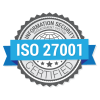The procurement industry has traditionally been slow to embrace new technologies, but that’s starting to change as more businesses turn to software-as-a-service (SaaS) solutions to optimize their procurement processes.
SaaS is transforming the procurement industry by offering a range of benefits, but it also presents some challenges that businesses need to be aware of.
In this article, we’ll take an in-depth look at the benefits and challenges of using SaaS for procurement and how it’s revolutionizing the industry.
Benefits of SaaS for Procurement
One of the primary benefits of SaaS for procurement is the ability to streamline processes and increase efficiency. With SaaS solutions, businesses can automate many of their procurement processes, from purchasing to invoice management, freeing up staff time and reducing the risk of human error. This, in turn, allows procurement professionals to focus on more strategic activities, such as supplier relationship management and contract negotiation.
SaaS solutions also offer greater flexibility than traditional on-premises solutions. Because they are cloud-based, SaaS solutions can be accessed from anywhere with an internet connection, making it easier for procurement teams to collaborate with stakeholders across the organization. This is especially important for businesses with multiple locations or remote employees, who may not have access to on-premises solutions.
Another benefit of SaaS solutions is the ability to scale up or down as needed. With traditional on-premises solutions, businesses have to invest in expensive hardware and software licenses upfront, which can be a barrier to entry for smaller businesses.
With SaaS solutions, businesses pay a monthly or annual subscription fee, which can be adjusted as needed based on their changing needs. This makes SaaS solutions more accessible to businesses of all sizes and allows them to scale their procurement processes as their business grows.
SaaS solutions also offer greater transparency and visibility into procurement processes. With SaaS solutions, businesses can track purchases and invoices in real-time, giving them a better understanding of their spending patterns and identifying potential cost savings opportunities.
This increased visibility can also help businesses mitigate risk by identifying potential fraud or compliance issues.
Challenges of SaaS for Procurement
While SaaS solutions offer a range of benefits for procurement, they also present some challenges that businesses need to be aware of. One of the primary challenges is data security. Because SaaS solutions are cloud-based, they rely on third-party vendors to store and manage sensitive data.
This can be a concern for businesses that deal with confidential information, such as financial data or personally identifiable information (PII). It’s important for businesses to choose SaaS vendors that have strong data security measures in place, such as encryption, firewalls, and multi-factor authentication.
Another challenge of SaaS solutions is the potential for vendor lock-in. Because businesses rely on SaaS vendors to manage their procurement processes, it can be difficult to switch to a different vendor if the business needs change or if the vendor raises its prices.
It’s important for businesses to carefully evaluate SaaS vendors before committing to a subscription and to ensure that they have a plan in place to transition to a different vendor if necessary.
SaaS solutions can also be more difficult to customize than on-premises solutions. Because SaaS solutions are designed to be used by a wide range of businesses, they may not offer the same level of customization as on-premises solutions.
This can be a concern for businesses that have unique procurement processes or requirements. It’s important for businesses to evaluate their needs carefully before selecting a SaaS vendor and to ensure that the vendor can accommodate their specific requirements.
SaaS solutions also require a reliable internet connection to function properly. While this is not typically a concern for businesses with stable internet connectivity, it can be a challenge for businesses in areas with poor connectivity. It’s important for businesses to evaluate their internet infrastructure and to ensure that they have a reliable internet connection before adopting a SaaS solution.
Summary
In summary, it’s clear to note that SaaS tools are changing the procurement industry by offering a range of benefits, including increased efficiency, flexibility, scalability, and transparency. Having that in mind, companies cannot ignore the challenges that these tools can present, having to pay close attention to how SaaS companies address data security, vendor lock-in, and any potential difficulties in customization that can negatively affect their business. To overcome these challenges, businesses should carefully evaluate their needs and choose SaaS vendors that have strong data security measures in place, offer flexible subscription plans, and can accommodate their specific requirements.
Despite these challenges, the benefits of using SaaS for procurement far surpasses potential challenges. As businesses look for ways to streamline their operations and gain a competitive edge, SaaS solutions are becoming an increasingly popular option. By adopting SaaS solutions for procurement, businesses can optimize their processes, reduce costs, and free up staff time to focus on more strategic activities. As such, it’s no surprise that SaaS is revolutionizing the procurement industry and will continue to do so in the coming years.


